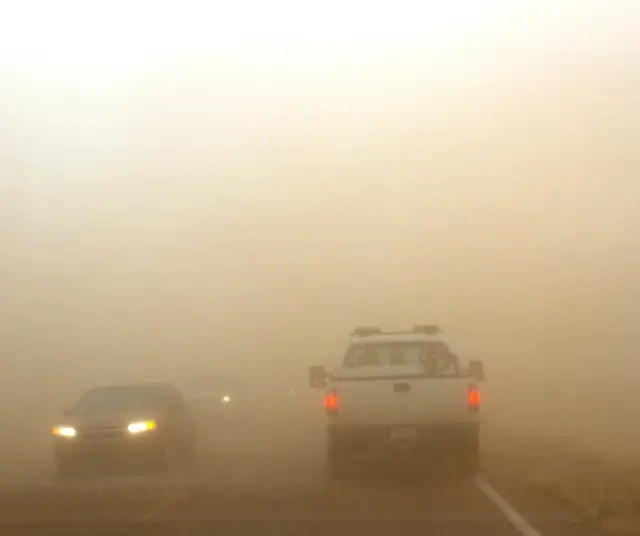The impact of sand and dust storms on the environment is a phenomenon that affects various regions of the world, generating significant consequences for human health, biodiversity and climate stability. In response to this growing concern, the international community has established International Day to Fight Sand and Dust Storms, a day dedicated to raising awareness about the importance of addressing this problem globally.
Sand and Dust Storms: A Global Threat
Sand and dust storms are natural events that involve the suspension and transport of fine particles of soil and sand in the atmosphere. These storms can occur at various scales, from small local eddies to massive events that affect entire regions. In addition to their immediate impact on visibility and air quality, sand and dust storms also have long-term consequences in terms of land degradation, loss of biodiversity and changes in climate.
Causes and Consequences of Sand and Dust Storms
Causes of Sand and Dust Storms
Desertification: The transformation of fertile lands into deserts contributes significantly to the generation of sandstorms. The loss of vegetation and soil erosion resulting from desertification facilitate the mobilization of fine particles by the wind.
Deforestation: The indiscriminate felling of forests reduces the retention capacity of the soil and increases exposure to erosion. The lack of trees to stabilize the land makes it easier for sandstorms to form by releasing particles into the wind.
Unsustainable Human Activity: Intensive agricultural practices, overexploitation of natural resources and unplanned urbanization contribute to soil degradation, creating conditions conducive to the generation of sandstorms.
Climate Changes: Alterations in weather patterns can influence the frequency and intensity of sandstorms. Climate variability, including prolonged droughts, can aggravate desertification and increase susceptibility to dust events.
Consequences of Sand and Dust Storms
Impact on Human Health: Inhalation of fine particles during sandstorms can have serious consequences for human health, exacerbating respiratory and cardiovascular diseases. Continued exposure can lead to chronic health problems.
Soil Degradation: The deposition of fine particles can affect soil quality by changing its composition and fertility. The loss of essential nutrients and resulting erosion can have long-term consequences for agricultural productivity and ecosystem health.
Loss of Biodiversity: Sand and dust storms can negatively affect local flora and fauna by degrading habitats and limiting the availability of resources. This can result in the loss of biodiversity and affect the balance of ecosystems.
Impact on Infrastructure: Reduced visibility during sandstorms can have direct consequences on road safety and the operation of infrastructure. Additionally, the accumulation of dust in buildings and equipment can generate additional maintenance costs.
Global Climate Changes: On a global level, sandstorms can have implications for climate change. The release of fine particles can affect solar radiation and atmospheric patterns, contributing to broader climate dynamics.
Human Health and Sandstorms
One of the most worrying aspects of sand and dust storms is their impact on human health. Fine particles suspended in the air during these events can penetrate deep into the lungs, causing respiratory problems and aggravating pre-existing conditions such as asthma and cardiovascular disease. Additionally, long-term exposure to these particles has been found to be linked to chronic respiratory diseases and other health problems.
Impact on Biodiversity and Ecosystems
Sand and dust storms also pose a threat to biodiversity and ecosystem health. The deposition of fine particles in soils can alter their composition and fertility, negatively affecting plant growth and the ability of soils to retain water. This, in turn, can have consequences in the food chain, affecting local flora and fauna. The resulting loss of biodiversity can have global ramifications, as many species are interconnected and dependent on each other for their survival.
Global Initiatives to Combat Sand and Dust Storms
Given the urgency of addressing this problem, the international community has undertaken various initiatives to combat sand and dust storms and mitigate their effects. These initiatives include:
Monitoring and Early Warning: Implementation of advanced monitoring systems to predict the occurrence of sand and dust storms, allowing communities and authorities to take preventive measures.
Ecosystem Restoration: Projects to restore degraded ecosystems through the planting of trees and the implementation of sustainable agricultural practices to prevent soil erosion.
Development of Control Technologies: Research and development of technologies to control the emission of fine particles, both locally and regionally.
International Cooperation: Promotion of cooperation between countries and organizations to address the problem jointly, sharing knowledge, technologies and resources.
The Role of Education and Awareness Raising
The role of education and awareness in combating sand and dust storms is crucial to addressing this environmental challenge effectively and sustainably. Public understanding and awareness are the foundations on which collective actions are built to preserve our environment.
Education plays a critical role in providing communities with solid knowledge about the causes and consequences of sand and dust storms. This not only involves reporting on the factors that contribute to these events, such as desertification and deforestation, but also highlighting the interconnections between soil health, biodiversity and air quality. By empowering people with this knowledge, it fosters a deeper understanding of the direct and indirect impacts of sand and dust storms on their daily lives.
Awareness-raising, on the other hand, goes beyond mere knowledge; It involves awakening empathy and a sense of responsibility towards the environment. Through educational campaigns, community events and outreach programs, we seek to create an emotional connection between people and the environment in which they live. This sense of connection strengthens individual and collective commitment to adopt more sustainable practices, from proper management of natural resources to reducing our carbon footprint.
In a broader context, education and awareness also play a determining role in promoting effective environmental policies. A well-informed and aware population is more likely to support government measures aimed at addressing the underlying causes of sand and dust storms, as well as to actively participate in local conservation and environmental restoration initiatives.
